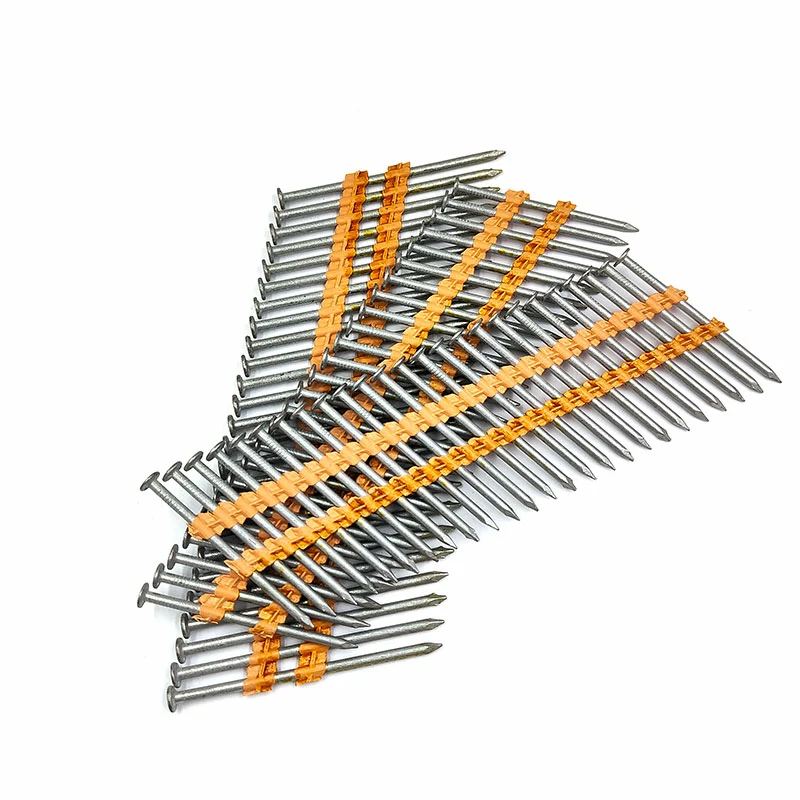In the construction industry, the choice between paper and plastic collated nails has been a subject of discussion due to their distinct characteristics, applications, and advantages. Understanding the differences between these collation types is essential for professionals seeking optimal performance and efficiency in various construction tasks.
Collated Nails: A Crucial Component in Construction
Collated nails, utilized in nail guns and pneumatic tools, streamline the fastening process, offering convenience and efficiency on construction sites:
- Speed and Accuracy: Collated nails enable rapid and precise nailing, contributing to increased productivity and smoother operations.
- Reduced Downtime: The collation prevents jams and misfires, reducing downtime during nail gun use.
Paper Collated Nails: Traditional and Reliable
Paper collated nails have been a staple in construction for years, offering specific benefits:
- Compatibility: Suited for a wide range of nail guns and applications, making them a versatile choice on construction sites.
- Environmentally Friendly: Made from biodegradable paper, these collated nails are eco-friendly and leave behind minimal waste.
Plastic Collated Nails: Enhanced Durability and Performance
Plastic collated nails have gained popularity due to their unique features:
- Moisture Resistance: Resistant to moisture and humidity, making them suitable for outdoor applications and areas prone to moisture exposure.
- Increased Stability: Greater resistance to splitting or breakage compared to paper collated nails, ensuring reliable fastening in demanding conditions.
Considerations for Choosing Between Paper and Plastic Collated Nails
Several factors influence the choice between these collation types:
- Application Requirements: Consider the environment and conditions where the nails will be used, such as indoor or outdoor settings, to determine the most suitable collation type.
- Tool Compatibility: Ensure that the chosen collated nails are compatible with the specific nail gun or pneumatic tool being used.
Market Trends and Innovations
The construction industry continually evolves, impacting the development of collated nails:
- Focus on Sustainability: Manufacturers are exploring sustainable materials and production methods to create eco-friendly collated nail options.
- Performance Enhancements: Ongoing research and technological advancements aim to improve the durability, efficiency, and compatibility of collated nails with various tools.
The choice between paper and plastic collated nails in construction depends on specific project needs, environmental factors, paper vs plastic collated nails and tool compatibility. While paper collated nails offer versatility and environmental friendliness, plastic collated nails excel in durability and performance under challenging conditions. Understanding the unique attributes of each type allows construction professionals to make informed decisions, ensuring efficient and reliable fastening solutions on diverse job sites. As advancements in materials and technology continue, the evolution of collated nails remains an essential aspect of enhancing productivity and performance in the construction industry.

